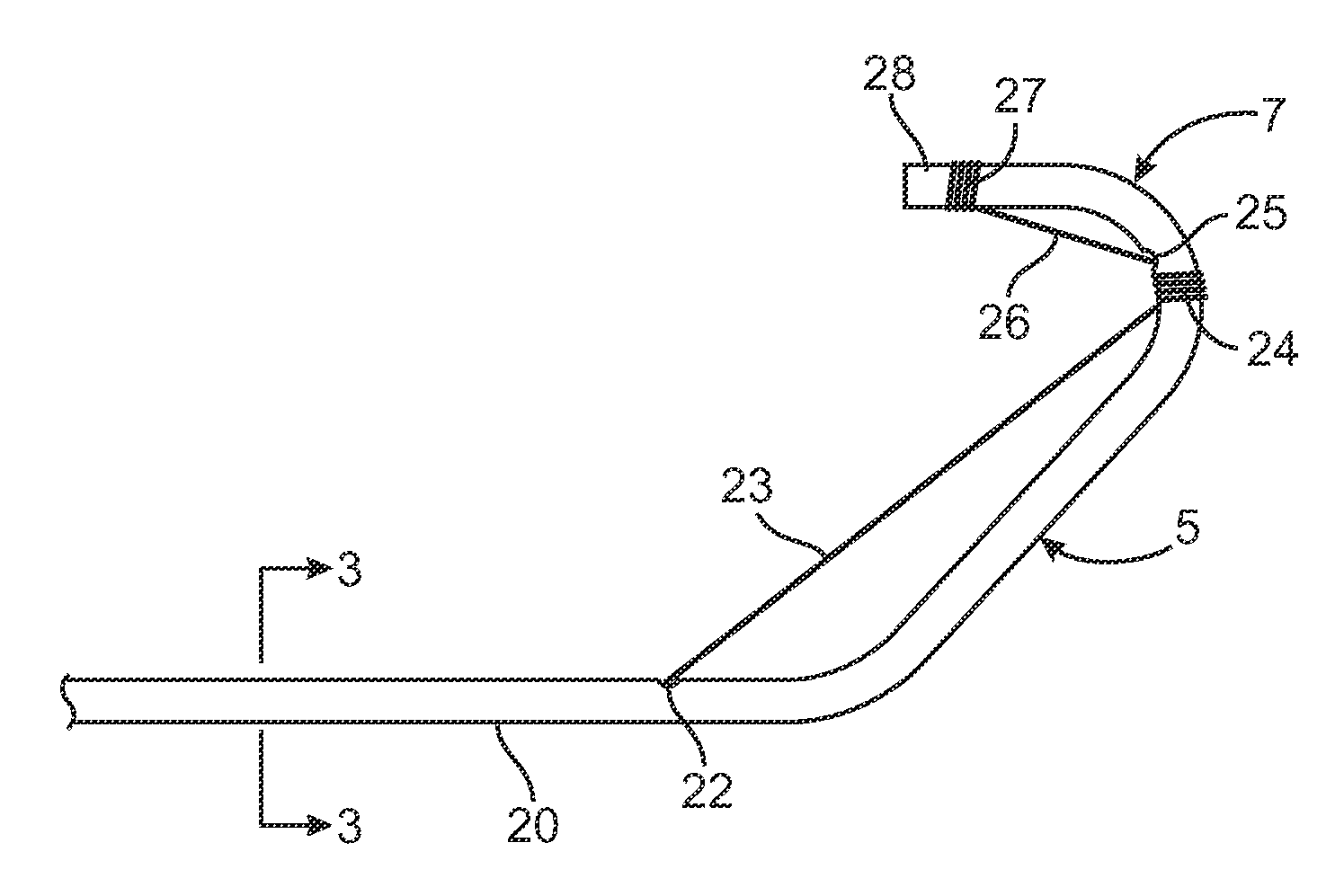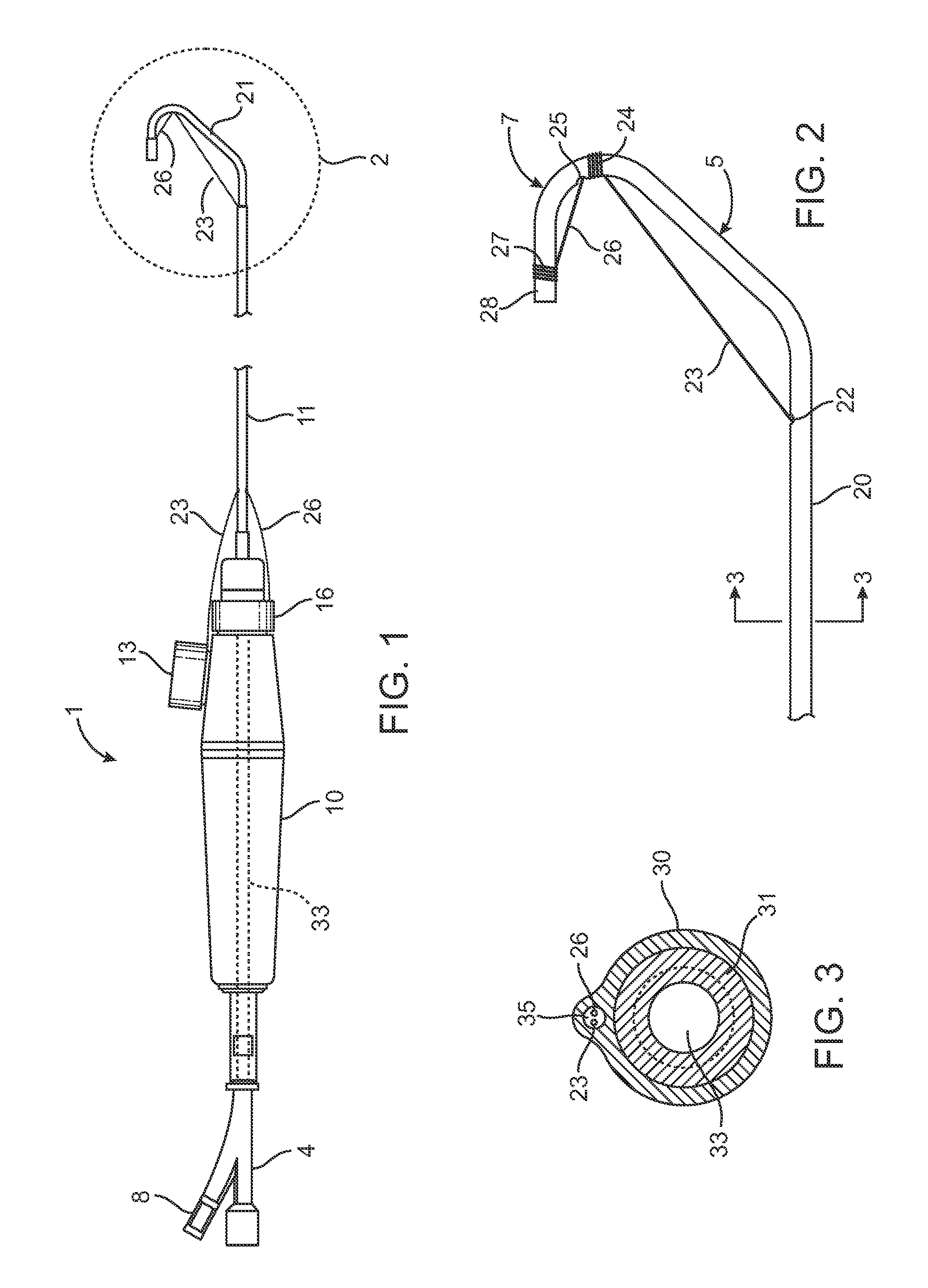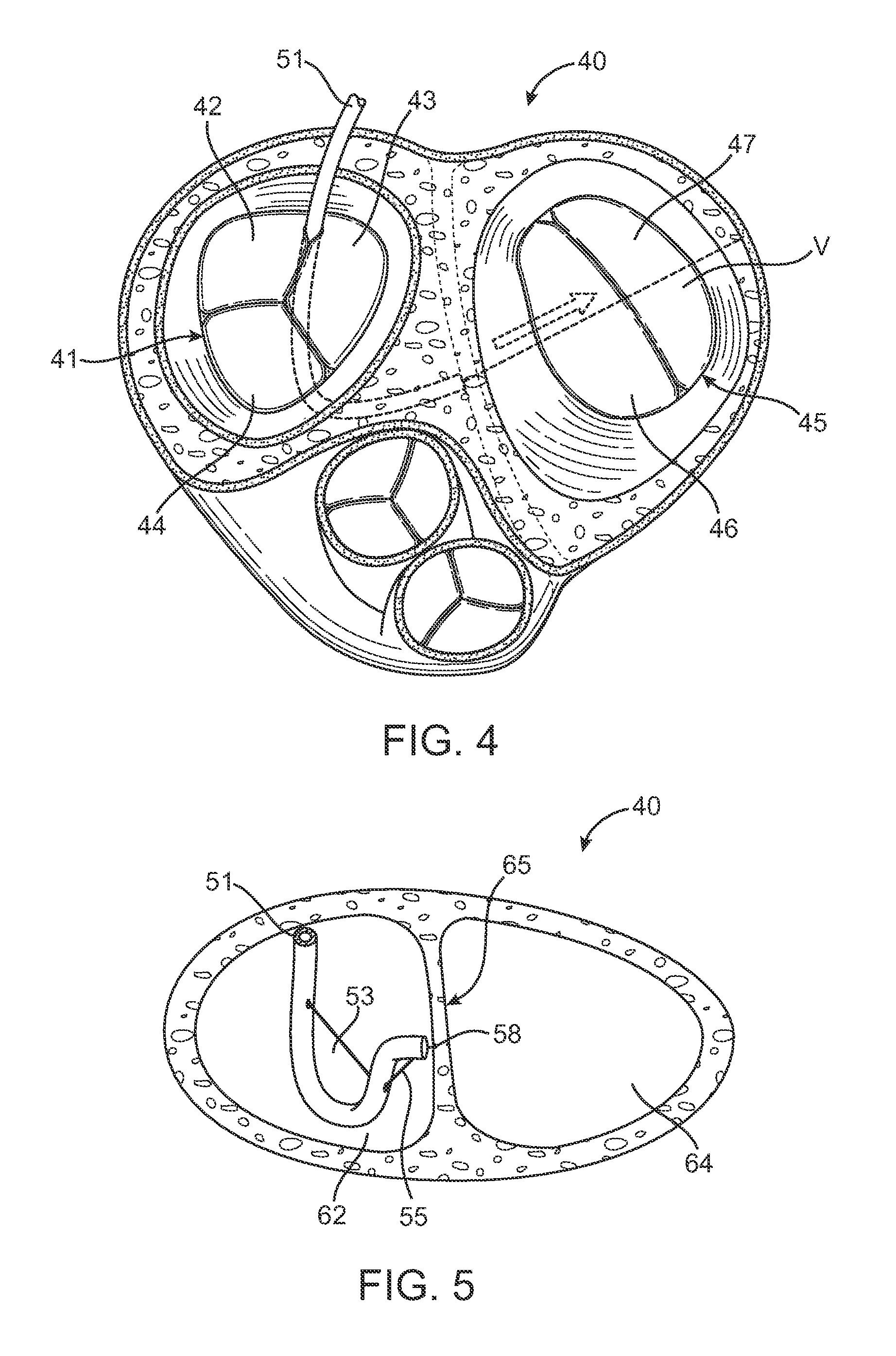Catheter Having a Selectively Formable Distal Section
a catheter and distal section technology, applied in the field of medical devices, can solve the problems of distorting the shape of the mitral valve, and reducing the ejection volume of the left ventricl
- Summary
- Abstract
- Description
- Claims
- Application Information
AI Technical Summary
Benefits of technology
Problems solved by technology
Method used
Image
Examples
Embodiment Construction
[0033] The invention will now be described in detail below by referring to the attached drawings, where like numbers refer to like structures. One aspect of the present invention is a catheter having a selectively formable distal portion. Curves having shapes that correspond to the interior anatomy of the chambers of the heart can be formed by manipulating control members of the catheter. The catheter can be braced against the chamber walls during deployment of devices used for treating valvular diseases.
[0034] Referring to FIG. 1, there can be seen a catheter having a selectively formable distal tip according to the current invention. The catheter 1 comprises a handle 10, a proximal section 11, and a distal section 21. As used herein, the term proximal means the portion or end of the catheter that is closest to the clinician manipulating the catheter when it is in use and distal means that portion or end of the catheter that is further away from the clinician when the catheter is ...
PUM
 Login to View More
Login to View More Abstract
Description
Claims
Application Information
 Login to View More
Login to View More - R&D
- Intellectual Property
- Life Sciences
- Materials
- Tech Scout
- Unparalleled Data Quality
- Higher Quality Content
- 60% Fewer Hallucinations
Browse by: Latest US Patents, China's latest patents, Technical Efficacy Thesaurus, Application Domain, Technology Topic, Popular Technical Reports.
© 2025 PatSnap. All rights reserved.Legal|Privacy policy|Modern Slavery Act Transparency Statement|Sitemap|About US| Contact US: help@patsnap.com



